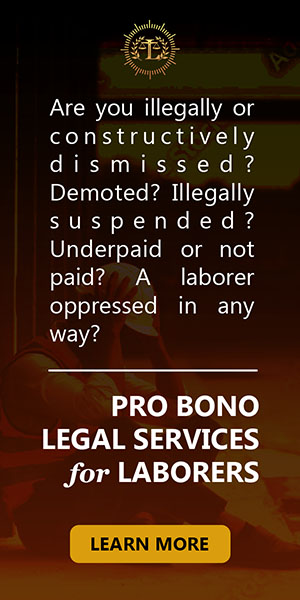Crimes Against Persons in Authority and their Agents
A. They include: (1) Direct Assault (2) Indirect Assault (3) Resistance and Disobedience and (4) Disobedience to Summons of Congress and Constitutional Commissions
B. Distinctions between:
1. Public officer- any person who takes part in the performance of public functions in the government (Art. 203)
- Person in authority( PIA)- one who is directly vested with jurisdiction to execute or enforce the laws
- Agent( APIA)- one who is generally charged with the maintenance of peace and order and the protection and security of life and property
4. Hence a public officer is not necessarily a PIA or APIA but the latter are always public officers.
Art. 148 Revised Penal Code. Direct Assault
I. There are two kinds the first being: Without a public uprising by employing force or intimidation to attain any of the purposes of rebellion or sedition. This is very rare. It is the second form which is commonly committed.
II. Second kind is committed when, without a public uprising, the offender: (i) Attacks (ii) Employs force (iii) Seriously intimidates or seriously resists (iv) Any person in authority or his agent (v) while engaged in the performance of official duties or on the occasion thereof (vi) knowing him to be such.
III. Requirements:
A. There must be an attack or employment of force or serious intimidation, upon the person of the victim. This includes any offensive or antagonistic movement of any kind, with or without a weapon. This may be an actual physical contact or the instilling of fear or threat of an evil on the person of the victim, but not on his property.
1. Examples: boxing, pointing a gun, brandishing a weapon, shouting and berating, challenging to a fight, throwing an article at him
2). The degree of force required depends on whether the victim is a PIA or APIA. In case of a PIA actual forced is not necessary because mere laying of hands is sufficient, such as by pushing or shoving him or pulling at his collar. If he were an APIA, actual force is required because mere laying of hands would constitute simple resistance
3). As to intimidation and resistance the same must be serious and actual whether the victim is a PIA or APIA otherwise the offense is resistance and disobedience under article 151.
B. The offended party must be a PIA or a APIA and has not yet been separated from the service. Thus the crime is committed even if at the time of commission the PIA/APIA is on leave, on vacation, or under suspension, but no when he has retired or was dismissed or removed.
1. The following are PIAs:
a). Any person directly vested with jurisdiction i.e he has the power to govern, execute the laws and administer justice
b). Teachers, professors and persons charged with the supervision of public or duly recognized private schools, colleges and universities. They must be within the school premises during school hours or are actually performing the tasks outside the school premises
c). Lawyers in the actual performance of their professional duties or on the occasion of such performance
Note that teachers and lawyers are PIAs only for purposes of Direct Assault and Resistance and Disobedience but not for purposes of Indirect Assault
d). Under the Local Government Code: (a) the Punong Barangay, (b) Sanguniang Barangay members and (c) members of the Lupong Tagapamayapa
2. The following are APIAS:
a. Those who, by direct provision of law, or by election or by appointment, are charged with the maintenance of public order and the protection of life and property ( AGENTS PROPER) such as :
(i). Law Enforcement Agents such as the PNP and the NBI irrespective of their rank
(ii). Barangay Tanods
(iii).Municipal treasurer being the agent of the provincial treasurer
(iv). The postmaster being the agent of the Director of Posts
(v). But Members of the AFP are not included
b. Any person who comes to the aid of PIAs who is under direct assault. ( AGENTS BY ASSISTANCE)
Note that if a teacher or lawyer is the person who comes to the assistance of the PIA, then he is considered as an APIA.
3. Thus private persons may be victims but to a limited extent: (i). when they are considered by law as PIAs or APIAs such as teachers and lawyers (ii). and those who come to the aid of PIAs
C. The accused must know the victim is a PIA/APIA which fact must be alleged in the Information
1. There must be a clear intent on the part of the accused to defy the authorities, to offend, injure or assault the victim as a PIA/APIA
IV. Time of the Assault:
1. If the assault is during the occasion of the performance of official duties the motive of the accused is immaterial. As long as the victim was assaulted in his office or in the premises where he holds office, or even while on his way to office, it is not required that he was actually doing an act related to his duties
2. If not on the occasion then the motive is important as the assault must be because of the past performance of official duties by the victim. The length of time between the performance of the duty and the time of the assault is immaterial. If the motive cannot be established, there is no direct assault but some lesser offense.
V. Rule When Material Injury Results: The crime of Direct Assault aims to punish lawlessness and defiance of authority and not the material injury which results from such defiance. When material injury however results, the following are the rules:
1. Where death, serious or less serious physical injuries result, they are to be complexed with direct assault. Example: A policeman was shot death while directing traffic: the crime is Homicide with Direct Assault
2. If only slight physical injuries are committed, the slight physical injury is a qualifying circumstance separate offense if the victim is a PIA but it will be absorbed if the victim is an APIA ( PP. vs. Acierto, 57 Phil. 614)
VI. When the Attack does not Constitute Direct Assault:
1. If both accused and victim are PIAs/APIAs and they contend or there is conflict arising from the exercise of their respective functions or jurisdictions. Examples:
(a). A fight between the Incumbent Mayor and the Acting Mayor as to who shall occupy the office
(b). NBI vs. Police concerning who shall take custody of a suspect
2. Where the PIA/APIA act with abuse of their official functions, or when they exceed their powers they are deemed to be acting in a private capacity. They become aggressors and the accused has a right to defend himself
3. Where they voluntarily descend to matters which are purely personal. But not when the PIA/APIA is dragged down to purely personal matters by the accused.
VII. Qualified Direct Assault:
1. When the accused lays hand upon the victim who is a PIA
2. When the accused is himself a Public Officer or employee
3. When the assault is with a weapon
ART. 149 Revised Penal Code. INDIRECT ASSAULT
I. Concept: The crime committed by any person who uses force or intimidation upon any person coming to the aid of an APIA who is under direct assault. The person who is assaulted should not be a PIA because the third person automatically becomes an APIA and the attack on him would constitute direct assault also.
1. The APIA is an agent proper such as a law enforcement agent. Direct Assault is being committed against him, not merely Resistance or Disobedience.
2. A Third person comes to his assistance. It is not required that the assistance be by virtue of the order or request of the APIA.
3. The third person is himself attacked. This is the gist of indirect assault.
II. Illustrations:
A. Examples: 1. A policeman is having a hard time pushing a suspect inside a police car because the suspect is pulling back. A third person who came to help put the suspect inside the car was kicked by the suspect. The kicking of the third person constitutes Physical Injuries merely. The police is not under Direct Assault.
B. Example 2. The Mayor is pushed and shoved while on his way home by an irate person whose house was demolished. A vendor who pulls the Mayor away is himself slapped. The crime on the Mayor is direct assault and the crime on the third person is also direct assault.
But if the third person directs the vendor to stop but the vendor tells him not to interfere, the crime against the third person would be resistance under Article 151.
C. Example 3. X came to help The Chief of Police who was being pushed and shoved by vendors who were not allowed to sell on the sidewalk. X was also kicked and boxed and thrown to the ground. Y came to help X but was himself kicked and boxed. What is the crime against Y?
ART. 151 Revised Penal Code. Resistance and Disobedience
I. Concept: The crime committed by any person who shall resist or seriously disobey any PIA or APIA while engaged in the performance of official duties.
A. The essence is the failure to comply with, or refusal to obey, orders directly issued by the authorities. Such orders are peremptory and not merely a declaration of facts or rights. They are directed to the accused for compliance or implementation without allowing any exercise of discretion by him.
B. Whether it be resistance or disobedience depends upon the degree of defiance by the offender
C. Examples:
1. Refusal to submit to the authority of the police and proceed to the police station by pushing and shoving the police
2. Refusal to hand over one’s driver’s license when required to do so
3. Refusal to vacate premises despite writ issued by court to place a party in possession, or disobeying a writ of injunction
4.. Refusal to give up article subjects of lawful seizure
5. But merely questioning the manner of arrest is not resistance
II. It is distinguished from direct assault thus:
a. In assault the force employed is more serious, unless the offended party is PIA
b. Resistance and disobedience can only be committed on the occasion of actual performance of duties by the offended party
c. Direct assault is committed in 4 ways, not just by resisting and disobeying



 Spotify
Spotify  iTunes
iTunes  AppleMusic
AppleMusic  YouTube
YouTube 


